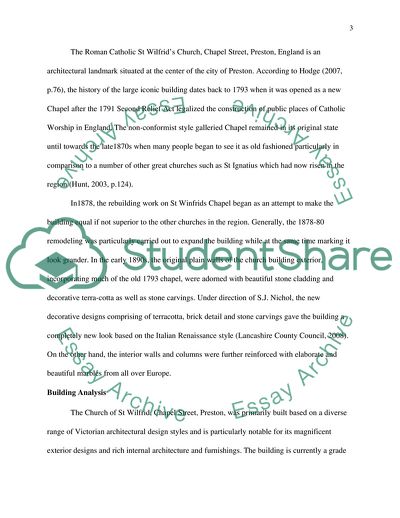Cite this document
(St Wilfrid's Catholic Church, Preston, Lancashire, England Essay Example | Topics and Well Written Essays - 1250 words, n.d.)
St Wilfrid's Catholic Church, Preston, Lancashire, England Essay Example | Topics and Well Written Essays - 1250 words. https://studentshare.org/architecture/1825555-st-wilfrids-catholic-church-preston-lancashire-england
St Wilfrid's Catholic Church, Preston, Lancashire, England Essay Example | Topics and Well Written Essays - 1250 words. https://studentshare.org/architecture/1825555-st-wilfrids-catholic-church-preston-lancashire-england
(St Wilfrid'S Catholic Church, Preston, Lancashire, England Essay Example | Topics and Well Written Essays - 1250 Words)
St Wilfrid'S Catholic Church, Preston, Lancashire, England Essay Example | Topics and Well Written Essays - 1250 Words. https://studentshare.org/architecture/1825555-st-wilfrids-catholic-church-preston-lancashire-england.
St Wilfrid'S Catholic Church, Preston, Lancashire, England Essay Example | Topics and Well Written Essays - 1250 Words. https://studentshare.org/architecture/1825555-st-wilfrids-catholic-church-preston-lancashire-england.
“St Wilfrid'S Catholic Church, Preston, Lancashire, England Essay Example | Topics and Well Written Essays - 1250 Words”. https://studentshare.org/architecture/1825555-st-wilfrids-catholic-church-preston-lancashire-england.


